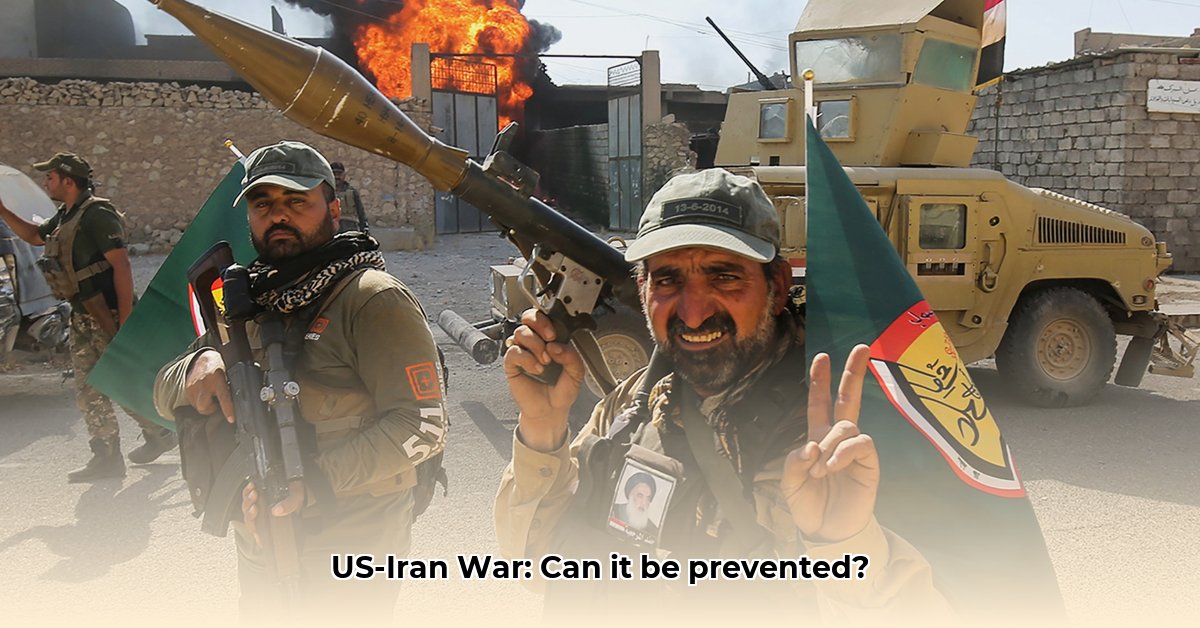The relationship between the United States and Iran has been fraught with tension for decades, consistently threatening to escalate into a full-scale war. This article provides an in-depth exploration of their intricate history, examining the cyclical patterns of conflict and cooperation, the core disagreements, and the underlying dynamics driving the discord. From Iran’s nuclear ambitions and regional influence to the contrasting perspectives of both nations, we’ll dissect the motivations of key stakeholders—the US, Iran, regional powers, and international organizations—and analyze their conflicting objectives. Crucially, we will investigate potential strategies to avert a major war and mitigate the volatility of the situation, even if complete reconciliation remains elusive. Understanding this complex relationship is paramount not only for preventing war but also for comprehending the broader dynamics of the Middle East and US-Iran relations.
US-Iran War: A Precarious Dance on the Brink of Conflict
The US-Iran relationship can be described as a complex web of conflict and uneasy cooperation. The threat of a full-blown war is ever-present. Preventing a US-Iran conflict requires a comprehensive understanding of past grievances, present challenges, and potential future trajectories. The history between Iran and the US influences current and future relations. It is crucial to recognize the multifaceted nature of this conflict, extending beyond simple political antagonism to encompass economic, ideological, and cultural dimensions.
A History of Deep-Seated Mistrust and Failed Diplomacy
The animosity between the US and Iran is not of recent origin. Events such as the 1953 CIA-backed coup that overthrew Prime Minister Mohammad Mosaddegh, the 1979 Iranian Revolution, the Iran-Contra affair (a clandestine US arms deal during the Iran-Iraq War), and persistent disagreements over Iran’s nuclear program have fueled long-standing tensions. These events have created a cycle of action and reaction, escalating tensions despite occasional periods of de-escalation. Each nation holds a distinct perspective: Iran perceives US actions as interventionist and aggressive, citing historical instances of interference in its domestic affairs, while the US views Iran as a destabilizing force in the region, pointing to its support for militant groups and its pursuit of nuclear capabilities. This fundamental difference in perception forms the crux of the issue of failed diplomacy. The historical narrative is further complicated by cultural misunderstandings and ideological differences, making diplomatic solutions exceedingly challenging.
The Nuclear Issue: A Ticking Time Bomb and the JCPOA
Iran’s nuclear program remains the primary point of contention. The 2015 nuclear deal, known formally as the Joint Comprehensive Plan of Action (JCPOA), presented a prospect for de-escalation by imposing verifiable restrictions on Iran’s nuclear activities in exchange for sanctions relief. However, the Trump administration’s withdrawal from the agreement in 2018 undermined progress, highlighting the fragility of the relationship. The US cited concerns over the deal’s sunset clauses and Iran’s ballistic missile program as justification for its withdrawal, while Iran argued that it was abiding by the agreement and accused the US of violating international law. Reviving the JCPOA or establishing a revised framework is crucial for averting war, requiring both nations to find common ground and rebuild trust amidst historical grievances. This would involve addressing concerns about Iran’s nuclear program while also ensuring that Iran receives the economic benefits promised under the original agreement. Can diplomacy overcome deep-seated mistrust? The path to nuclear non-proliferation in the region depends on it.
Regional Proxy Wars: The Fight Spreads and Mideast Conflicts
The conflict transcends direct US-Iran interaction, manifesting in proxy wars across the Middle East. Countries such as Yemen, Syria, Lebanon, and Iraq have become arenas for indirect confrontation, heightening tensions and increasing the risk of a broader conflict. In Yemen, the US supports the Saudi-led coalition against the Houthi rebels, who are allegedly backed by Iran. In Syria, the US supports rebel groups fighting against the Assad regime, which is supported by Iran and Russia. In Lebanon, the US views Hezbollah as a terrorist organization and a proxy of Iran, while Iran sees Hezbollah as a legitimate political and military force. These “proxy” wars underscore the need for regional actors to de-escalate tensions. Can regional stability be achieved without addressing these proxy conflicts? A comprehensive approach to regional security must involve addressing the root causes of these conflicts, such as sectarianism, political grievances, and economic inequality.
Sanctions: A Powerful Tool for Iran Nuclear Ambitions?
Economic sanctions form a key component of the US strategy against Iran. The US has imposed a wide range of sanctions on Iran, targeting its energy sector, financial institutions, and individuals. However, the effectiveness of these sanctions remains a subject of debate. Have they curbed Iran’s nuclear ambitions, or have they merely intensified resentment and resolve? Some argue that sanctions have forced Iran to the negotiating table, while others contend that they have only harmed the Iranian people and fueled anti-American sentiment. The efficacy of sanctions as a path to peace remains uncertain. Do sanctions provide a path to peace or only fuel conflict? The long-term effects of sanctions are also uncertain, as they could potentially lead to economic collapse and political instability in Iran.
Finding a Path Forward: Diplomacy and Cooperation in the Middle East
Preventing a US-Iran war necessitates a multifaceted approach. Diplomacy remains indispensable, even amidst strained relations. Maintaining open lines of communication is crucial. Identifying areas for cooperation, such as counterterrorism efforts, could offer opportunities for de-escalation and conflict resolution. Both the US and Iran have a shared interest in combating ISIS and other extremist groups in the region. Overcoming deep-seated mistrust, however, poses a significant challenge. Can both sides find a way to overcome their deep mistrust? This would require a willingness to engage in dialogue without preconditions, to acknowledge past mistakes, and to build confidence-building measures.
High Stakes: The Potential Consequences of War and Regional Security
A war between the US and Iran would yield catastrophic consequences, potentially triggering a wider regional conflict with unimaginable human costs and severe repercussions for the global economy. Such a conflict could destabilize the entire Middle East, lead to a surge in oil prices, and spark a global economic recession. Avoiding such a catastrophe must remain a paramount objective for all stakeholders. The potential for escalation is particularly high, given the presence of US military forces in the region and Iran’s network of allies and proxies.
Actionable Steps: Contributions from Each Player for Iran War Prevention
Here’s a breakdown of actionable steps various stakeholders can take to prevent conflict:
| Stakeholder | Short-Term Actions | Long-Term Actions |
|---|---|---|
| US Government | Prioritize diplomatic engagement; explore possibilities for limited cooperation in areas of mutual concern (e.g., counterterrorism). | Develop a comprehensive, long-term strategy balancing diplomacy, security imperatives, and economic policies; carefully assess potential consequences of its actions; foster greater understanding of Iranian culture and perspectives within the US government. |
| Iranian Government | Prioritize economic growth & development; actively pursue international recognition; manage internal political tensions effectively; reduce provocative rhetoric and actions in the region. | Enhance domestic stability; actively seek regional cooperation; address nuclear concerns constructively, transparently, and openly; promote greater transparency and accountability in its foreign policy. |
| Regional Actors | Work to de-escalate existing proxy conflicts; promote regional dialogues and discussions; refrain from actions that could escalate tensions between the US and Iran. | Establish stronger regional cooperation mechanisms; proactively implement measures to build trust among nations; address the root causes of conflict in the region, such as sectarianism and political grievances. |
| International Community | Support diplomatic initiatives; refine sanctions strategies to be more carefully targeted and effective; encourage dialogue and cooperation between the US and Iran. | Promote broader multilateral diplomacy; strengthen global norms and institutions focused on conflict resolution; provide humanitarian assistance to those affected by conflict and sanctions. |
The path to peace is arduous, but preventing a US-Iran war is essential. As ongoing research and evolving understanding shed light on this intricate relationship, sustained dialogue and flexibility from all parties are absolutely vital. Third-party mediation and shuttle diplomacy could play a crucial role in facilitating communication and finding common ground. Furthermore, fostering people-to-people exchanges and cultural understanding could help to bridge the divide between the two nations.
How to Mitigate the Risk of Unintended Escalation in US-Iran Proxy Conflicts
The geopolitical landscape significantly elevates the risk of unintended escalation between the US and Iran, predominantly through proxy conflicts. Traditional deterrence strategies have limitations when applied to non-state actors and asymmetric warfare tactics. Improved intelligence gathering, enhanced communication, and robust cyber defenses are critical for short-term risk reduction. Long-term solutions require international cooperation on arms control, the development of conflict resolution mechanisms, and the establishment of norms for cyber warfare. The US and Iran involvement in proxy conflicts has global implications, contributing to instability and humanitarian crises in the affected regions.
Key Takeaways:
- The world climate is unstable, characterized by increasing geopolitical competition and the rise of non-state actors.
- Deterrence strategies are sometimes not enough, especially in asymmetric conflicts where non-state actors are willing to accept higher risks.
- Intelligence, communication and cyber security are the most important things in conflict prevention, enabling more targeted responses and preventing miscalculations.
- Arms control requires international participation to be effective, as unilateral efforts can be easily undermined.
Understanding the Proxy War Dynamic and Regional Security
The US-Iran conflict manifests as a series of proxy conflicts across various countries, involving numerous non-state actors. These conflicts are often driven by sectarianism, political grievances, and economic competition. Mit










